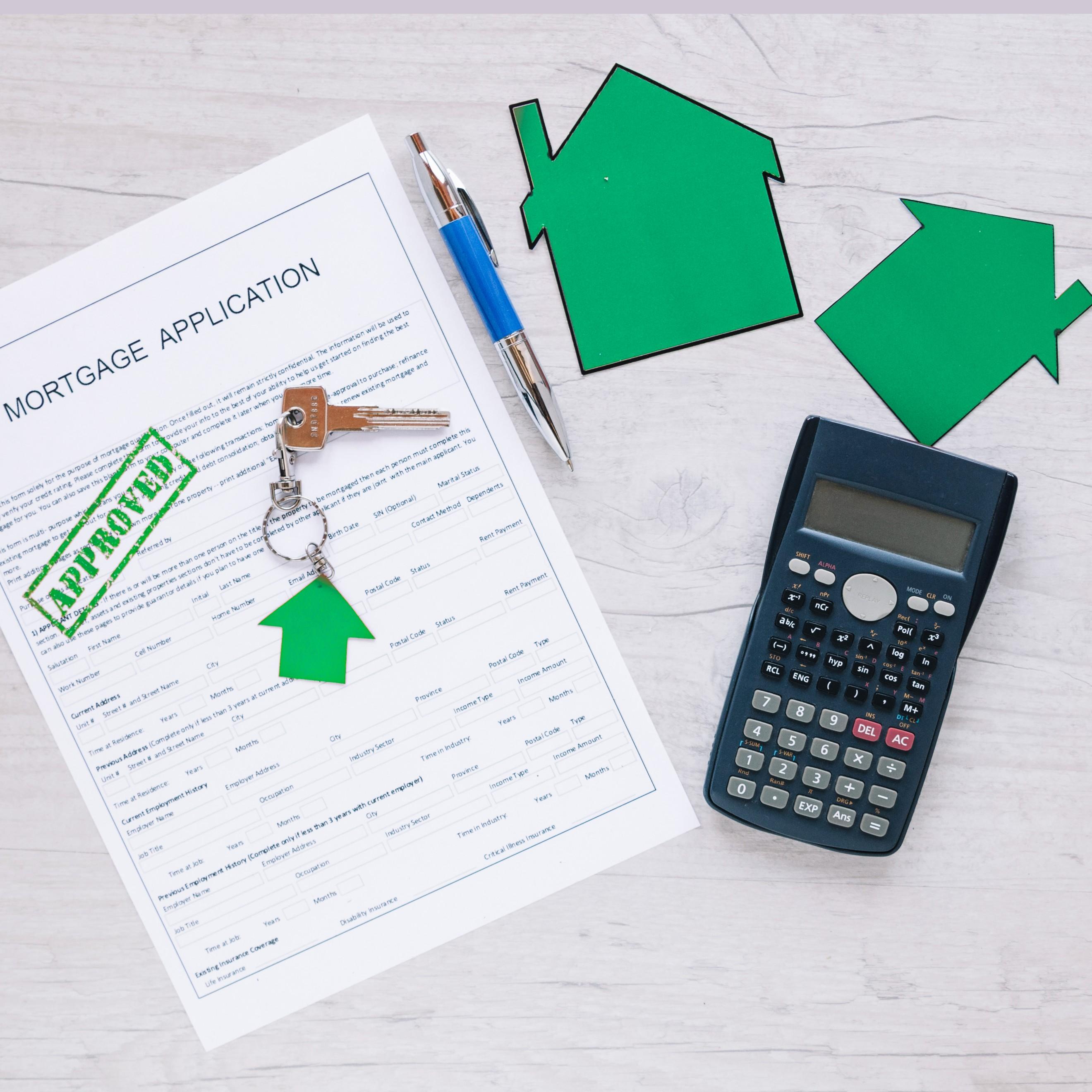



Table of Contents
- Introduction to Reverse Mortgage Loans
- What is a Reverse Mortgage?
- Key Features of Reverse Mortgages in India
- How Reverse Mortgages Work in India - Application Process
- Payment Options
- Advantages of Reverse Mortgages in India
- Disadvantages of Reverse Mortgages in India
- Costs Associated with Reverse Mortgages
- Impact on Government Benefits
- Estate Planning Considerations
- Alternatives to Reverse Mortgages
- Real-Life Scenarios and Case Studies
- Conclusion
- Faq's
Introduction to Reverse Mortgage Loans
Reverse mortgage loans are an innovative financial product aimed primarily at senior citizens in India, allowing them to convert a portion of their home equity into cash without selling their property or making monthly mortgage payments. This financial tool is particularly relevant for retirees who may own valuable real estate but lack sufficient liquid assets to meet their daily expenses and healthcare costs. As the Indian population ages, the need for such financial solutions is becoming increasingly critical.
In this comprehensive guide, we will explore the concept of reverse mortgages in India, how they work, their pros and cons, the application process, and the implications for financial planning and estate management.

What is a Reverse Mortgage?
A reverse mortgage is a loan that enables homeowners, typically aged 62 and above, to borrow against the equity in their property. Unlike traditional mortgages, where borrowers make monthly payments to reduce their loan balance, reverse mortgages allow seniors to receive payments from the lender. The loan does not need to be repaid until the borrower dies, sells the home, or moves out permanently. At that point, the loan balance, which includes the amount borrowed plus accrued interest, must be settled, often through the sale of the property
Key Features of Reverse Mortgages in India
No Monthly Payments: Borrowers are not required to make monthly payments, which can ease financial burdens during retirement.
Flexible Payment Options: Homeowners can choose to receive funds as a lump sum, monthly payments, or a line of credit that they can draw on as needed.
Non-Recourse Loan: The borrower or their heirs will never owe more than the home's value at the time of repayment, even if the loan balance exceeds this amount.
Eligibility Requirements: To qualify for a reverse mortgage in India, borrowers must be at least 62 years old, own their home outright or have a significant amount of equity, and live in the home as their primary residence.
Counseling Requirement: Prospective borrowers must undergo counseling from a certified financial advisor to ensure they understand the implications and responsibilities of a reverse mortgage.
How Reverse Mortgages Work in India - Application Process

To apply for a reverse mortgage in India, homeowners must meet certain eligibility criteria, including age and equity requirements. The application process typically involves several steps:
Pre-Application Counseling: As mandated by the National Housing Bank (NHB), borrowers must complete a counseling session to understand the product's benefits and risks. This session helps borrowers evaluate their financial situation and consider alternatives to a reverse mortgage.
Application Submission: Homeowners submit their application along with necessary documentation, such as proof of age, income, and property ownership. Lenders will also require information about existing mortgages and any liens on the property.
Home Appraisal: An appraisal is conducted to determine the home's current market value, which influences the amount the borrower can receive. The appraisal assesses the condition of the home and its location, which are critical factors in establishing its value.
Loan Approval: Once approved, the borrower can choose how they want to receive the funds: as a lump sum, monthly payments, or a line of credit. The amount available is based on the borrower's age, the home's value, and current interest rates.
Closing: The loan is finalised, and the borrower receives the funds according to their chosen payment plan. At closing, the borrower will sign the necessary documents and pay any upfront costs associated with the loan.
Payment Options
Borrowers in India can receive their funds through several methods:
- Lump Sum: A one-time payment received at closing. This option is often used for immediate financial needs, such as paying off existing debts or making significant purchases.
- Monthly Payments: Regular payments for a specified period or for the life of the borrower. This option provides a steady income stream, which can help cover living expenses.
- Line of Credit: A flexible option that allows borrowers to withdraw funds as needed, with the unused portion growing over time. This option is particularly appealing for those who want to maintain financial flexibility and only draw on the funds when necessary.
These options can be tailored to fit the individual's financial needs and goals, making reverse mortgages a versatile financial tool for Indian seniors.
Advantages of Reverse Mortgages in India
Increased Cash Flow: Reverse mortgages provide additional income, helping retirees manage living expenses, healthcare costs, and other financial obligations. This extra cash can be particularly valuable for those on fixed incomes.
Stay in Home: Borrowers can continue living in their homes without the burden of monthly mortgage payments. This stability can be crucial for seniors who wish to age in place.
Non-Recourse Feature: Borrowers or their heirs are protected from owing more than the home's value at the time of repayment. This feature provides peace of mind, knowing that the loan will not create a financial burden for heirs.
Flexible Payment Options: Homeowners can choose how to receive their funds, allowing for customised financial planning. This flexibility can help borrowers adapt to changing financial needs over time.
Potential Tax Benefits: The funds received from a reverse mortgage are generally not considered taxable income, which can provide additional financial relief.
Disadvantages of Reverse Mortgages in India
Accumulating Debt: Since no monthly payments are required, the loan balance increases over time, which can deplete home equity. This can be a concern for those who wish to leave their home as an inheritance.
Impact on Inheritance: The loan must be repaid upon the borrower's death or when they move out, potentially leaving heirs with less equity in the home. This can lead to difficult conversations with family members about estate planning.
Costs and Fees: Reverse mortgages can come with high upfront costs, including origination fees, mortgage insurance premiums, and closing costs. These can reduce the amount of equity available to the borrower.
Eligibility and Counseling: The requirement for counseling and strict eligibility criteria can be barriers for some potential borrowers. This process may deter those who are not fully aware of the benefits and risks associated with reverse mortgages.
Potential for Foreclosure: If the borrower fails to pay property taxes, homeowners insurance, or maintain the home, the lender may initiate foreclosure proceedings. This risk highlights the importance of ongoing financial management throughout the life of the loan.
Costs Associated with Reverse Mortgages

When considering a reverse mortgage, borrowers should be aware of the various costs involved:
Origination Fees: Charged by the lender for processing the loan application. These fees can vary significantly between lenders, so it is important to shop around for the best rates.
Mortgage Insurance Premiums: Required for HECMs, this insurance protects the lender in case the loan balance exceeds the home's value. The upfront premium is typically a percentage of the home's appraised value, with an annual premium of a certain percentage of the remaining loan balance.
Closing Costs: Similar to traditional mortgages, these can include title insurance, appraisal fees, and attorney fees. Borrowers should request a Good Faith Estimate (GFE) from their lender to understand the total closing costs involved.
Ongoing Costs: Borrowers must continue to pay property taxes, homeowner's insurance, and maintenance costs, which can impact overall financial health. Failure to keep up with these expenses can lead to foreclosure.
Impact on Government Benefits
Receiving funds from a reverse mortgage can affect eligibility for government assistance programs like the Indira Gandhi National Old Age Pension Scheme (IGNOAPS) and other social welfare schemes. Borrowers should carefully assess how these funds will impact their financial situation and consult with a financial advisor if necessary. For example, while the funds may not count as income for certain schemes, they could be considered an asset, potentially affecting eligibility.
Estate Planning Considerations
Before taking out a reverse mortgage, homeowners should consider how it will affect their estate planning. The debt incurred through the reverse mortgage must be repaid, usually through the sale of the home. This can reduce the inheritance left to heirs. It is advisable for borrowers to discuss their plans with family members and estate planning professionals to ensure that everyone understands the implications of a reverse mortgage.
Alternatives to Reverse Mortgages
For some seniors, reverse mortgages may not be the best solution. There are several alternatives to consider:
- Home Equity Loans or Lines of Credit (HELOCs): These options allow homeowners to borrow against their home equity but require monthly payments. They may be suitable for those who can manage regular payments and want to avoid the complexities of a reverse mortgage.
- Downsizing: Selling the current home and purchasing a smaller, more affordable property can free up cash and reduce ongoing expenses. This option may also allow seniors to move to a more suitable living environment.
- Renting Out a Room: Homeowners can consider renting out a portion of their home to generate additional income. This option allows them to stay in their home while supplementing their income.
- Financial Planning and Budgeting: Seniors can benefit from working with a financial advisor to create a budget and explore ways to reduce expenses. This proactive approach can help them manage their finances without relying on a reverse mortgage.
Real-Life Scenarios and Case Studies
Case Study 1: The Sharma Family
The Sharmas, a retired couple aged 65 and 67, owned their home outright but were struggling to manage rising healthcare costs and daily living expenses. After consulting with a financial advisor, they decided to pursue a reverse mortgage. They opted for a monthly payment plan, allowing them to receive a steady income stream to cover their expenses.
Over the next few years, the Sharmas used the funds to pay for medical treatments and home maintenance. The flexibility of the reverse mortgage allowed them to maintain their lifestyle without the stress of monthly payments. When Mrs. Sharma passed away, Mr. Sharma was able to continue living in the home until he decided to sell it and move to a retirement community. The proceeds from the sale were sufficient to pay off the reverse mortgage, leaving him with a comfortable nest egg.
Case Study 2: The Gupta Family
The Guptas, both 62, were looking to retire and travel but were concerned about their limited retirement savings. They owned a home worth ₹80 lakhs with a remaining mortgage balance of ₹20 lakhs. After researching options, they decided to take out a reverse mortgage to pay off their existing mortgage and access additional funds for their travels.
They chose a lump sum payment to pay off the mortgage and received an additional ₹30 lakhs. This allowed them to eliminate their monthly mortgage payment and have funds available for their retirement plans. However, they were aware that the loan balance would increase over time, potentially impacting their estate. They discussed their plans with their children, ensuring everyone understood the implications of their decision.
Conclusion
Reverse mortgage loans offer a unique financial solution for older homeowners in India looking to access their home equity without the burden of monthly payments. While they can provide significant benefits, such as increased cash flow and the ability to remain in one's home, potential borrowers must weigh these advantages against the drawbacks, including accumulating debt and potential impacts on inheritance.
Before proceeding with a reverse mortgage, individuals should conduct thorough research, understand the associated costs, and consider seeking professional financial advice. By doing so, they can make informed decisions that align with their long-term financial goals and ensure that a reverse mortgage is the right fit for their retirement strategy.
Reverse mortgages indeed can be a valuable tool for seniors, providing financial flexibility and security during retirement. However, they are not a one-size-fits-all solution. Each homeowner's situation is unique, and careful consideration of all options is essential for making the best decision for their financial future. Whether through a reverse mortgage or alternative strategies, the goal should always be to achieve a comfortable and secure retirement.
As India continues to age, the financial landscape for seniors will evolve. Reverse mortgages represent one of many tools available to help older adults manage their finances effectively. As awareness grows and more financial institutions begin to offer these products, it is crucial for potential borrowers to educate themselves about the implications and benefits of reverse mortgages. By doing so, they can ensure a more secure and fulfilling retirement
explore further
Latest from Editorials
More from Publications
Resources
Dwello, for every home buyer, is a way to go from 'I feel' to 'I know', at no extra cost.




